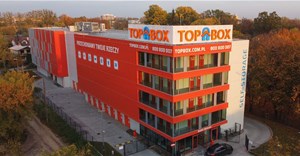Continued growth in Kenya's logistics sector boosts property market

The report covers the last quarter of 2018 and was released during the East Africa Property Investment Summit in Kenya’s capital Nairobi on Wednesday, 10 April. The report shows that Nairobi’s supply of warehouses as at Q4 2018 stood at an estimated 1.2 million square metres, registering a 15% growth from close to 1.1 million square metres as at Q4 2017.
“Kenya is the most advanced economy in East Africa and one of the largest in the sub-region. With GDP growth picking up from around 5% in 2017 and projected to come in around 5.9% for 2018, the country has experienced increased investor confidence and foreign direct investment inflows,” says Elaine Wilson, director of Broll Property Intel.
Vivian Ombwayo, Broll Kenya’s head of research and valuations, who contributed to the report, notes: “The Kenyan logistics sector is directly impacted by the performance of all sectors of the economy and in particular the industrial sector, which includes the import and export of goods (warehousing). The country’s logistics market is largely driven by manufacturing, transport and storage, as well as wholesale and retail, while the establishment of special economic zones (SEZs) has also facilitated the sector’s expansion.”
Increased supply pipeline of A-grade warehouses
She adds: “Digging down into the detail of the report, our research shows that there was an increased supply pipeline of A-grade warehouses mainly in Nairobi’s peripheral areas. However, the stock of lower specification warehouses termed 'go-downs' largely supplied in the main industrial area, showed a decline. This points to the changing face of the Nairobi market, which is now increasingly able to satisfy the demand for quality stock.”
On the occupancy front, the report shows that logistics occupancy levels registered a year-on-year increase of 4% in Q4 2018. “The highest interest growth, from 67% in 2017 to 77% in 2018, was noted for A-grade warehouse units, as most of the operators seem to appreciate higher specifications, which eventually translates to lower operational costs,” it notes.
The report highlights that Kenya’s logistics market has continued to develop over the past decade, from the typical low specification ‘go-downs’, to higher quality A- and B-grade warehouses. “With improved infrastructure, most operators are now considering relocating to less congested areas away from Nairobi City, such as Kiambu and Machakos counties where there is availability of relatively cheap land,” explains Ombwayo.
Lease terms

With regards to lease terms in the Kenyan logistics market, the report notes that leases are typically for a minimum of five years and one month with fixed rentals and pre-determined annual escalations. Lease areas are quoted in square feet (ft²). Rents are based on net rental, which means service charges (electricity and water) are charged separately. In industrial properties parking is typically free.
Generally, rents are quoted as net rents in Kenya shillings (KSh or US$)/ft²/month. Rents are payable on a quarterly basis in advance and exclude VAT payable of 16%. The report notes that “rent-free periods” are not usual in the market, but in certain instances one month may be negotiated.
In terms of average rental rates in Q4 2018, the report highlights that across the logistics market, rental rates remained fairly unchanged in comparison to Q4 2017. However, A-grade warehouses achieved the highest net rental rates of between KSh50/ft²/month – KSh80/ft²/month. Rental rates vary depending on specifications, amenities and location.
B-grade warehouses account for some 920,000m² of space, taking up the highest share of the market. However, rental rates for B-grade warehouses were much lower, at between KSh25/ft²/month – KSh48/ft²/month. Ombwayo notes that the divergence in rental rates between grades is creating a two-tiered market.
The report also zones into the various sectors that take up logistics or warehousing property space, including transport and storage (approximately 26%); manufacturing and engineering (23%); and, wholesale (22%). “The demand from these users are mainly driven by improved infrastructure; government support with regards to tax incentives and SEZ status; expanding retail platforms; and, Mombasa Port’s throughput growth,” explains Ombwayo.
Special economic zones
With regards to new SEZs, the report states that the Special Economic Zone Act of 2015 has facilitated the establishment of these zones, aimed at reducing operational costs for potential investors in the production of goods and services. There are currently two privately owned SEZ’s in Kenya, which include the 907-acre Tatu City, located in Kiambu County; and, Africa Economic Zones on a 700-acre site, located in Uasin Gishu County.
Besides new SEZs, another key driver of growth and confidence in the market includes the expansion of port throughput attributed to major infrastructure investment into the new Standard Gauge Railway (SGR) link to Mombasa.
“The volume of port throughput grew by 10% in 2018, from 1.19 million twenty-foot equivalent units (TEU) in 2017, to 1.31 million TEU in 2018. This growth was driven by the performance of the SGR from Nairobi to Mombasa, which commenced commercial freight operations in January 2018. The next phase of the SGR, connecting Nairobi to Nakuru (Kenya’s fourth largest city), is anticipated to be completed by the first half of 2019,” the report notes.
Ombwayo says: “Continued growth in Kenya’s logistics sector is envisioned for the foreseeable future. The expansion of A-grade warehousing is anticipated to grow as the confidence of regional and international operators increase, due to improved business conditions such as tax rebates offered in SEZs and increased port throughput expected from the completion of the Nairobi-Nakuru SGR in mid-2019.”

























